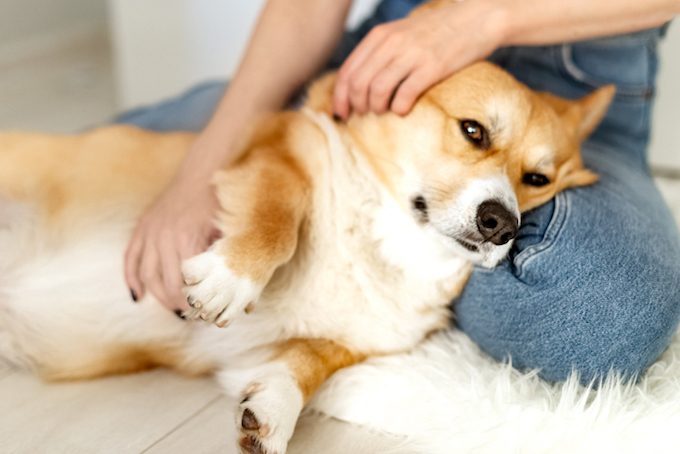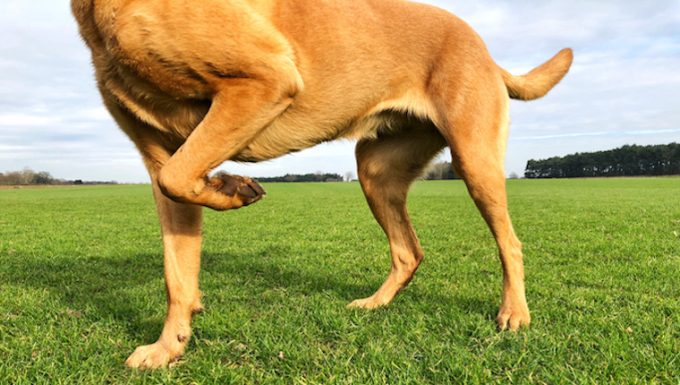Kneecap dislocation in dogs happens when a kneecap moves to the side and into an abnormal position. Usually, trauma or a congenital defect is the cause.
Unfortunately, smaller dogs develop the condition more often than usual. For example, Chihuahuas, Yorkshire Terriers, and Boston Terriers suffer from the condition a lot.
Technically, the condition is also known as luxating patella in dogs.
If you see the signs of the condition in your dog, then get to a veterinarian for a proper diagnosis and treatment.
Here’s what you should know about the symptoms, causes, and treatments for the condition.
Symptoms of Kneecap Dislocation in Dogs
The condition produces the main symptom of a dog lifting up the affected leg. Additionally, the following symptoms are common:
- Limping
- Popping noise when bending the knee
- Bowlegged stance
- Discomfort
Causes of Kneecap Dislocation in Dogs

The cause of the condition is usually hereditary. This means that a dog is born with the condition. Additionally, trauma can cause the condition.
Unfortunately, smaller dogs seem to develop the condition more than other dogs. For example, the following breeds suffer from the condition a lot:
- Yorkshire Terrier
- Chihuahua
- Boston Terrier
- Shih Tzu
- Toy Poodle
- Pomeranian
- Jack Russell Terrier
- Pug
- Tibetan Spaniel
- Pekingese
- Maltese
However, certain larger dog breeds also seem to develop the condition more than usual. For instance, the Great Dane, Akita, and Irish Wolfhound breeds suffer from the condition more than normal.
Treatments for Kneecap Dislocation in Dogs
Firstly, your vet will ask about your dog’s symptoms. Secondly, a full physical examination will be carried out. Usually, this is enough to diagnose the condition. Although in some cases X-rays may also be used.
Generally, treatment involves either medication or surgery. For example, anti-inflammatory medication can help. As always, if your vet prescribes your dog any medicine, make sure to stick to the correct dose and frequency instructions. Also, complete the full course of medicine.
Additionally, weight loss can also help. Your vet will formulate a safe and healthy diet plan for your dog.
However, if medication does not help, surgery can be considered. This involves replacing the kneecap back to its normal position. But unfortunately, the condition returns in a significant number of cases.
Generally, while recovering from the condition, you will need to limit your dog’s exercise. Your vet will help you come up with a safe exercise plan to help your dog recover successfully.
Have you ever cared for a dog who suffered from this condition? How did your vet help your dog recover? Let us know in the comments section below.






